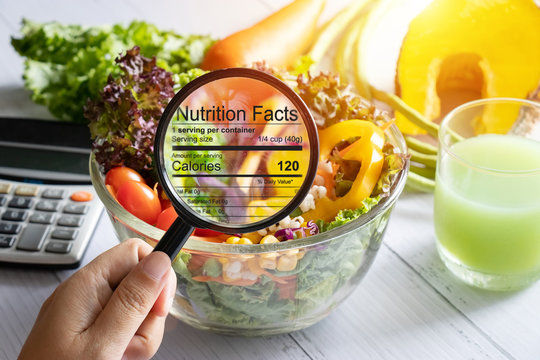Why Front-of-Package Nutrition Labels Could Be a Game-Changer
- Anna Ibarra

- Jan 21
- 3 min read
Updated: Feb 21

You’re rushing through the grocery store, trying to grab a quick snack before heading to your next appointment. You glance at the front of a package, and there it is—a clear, straightforward breakdown of the calories, added sugars, and fats you’re about to consume. No flipping boxes. No fine print.
That’s the promise of front-of-package nutrition labels, a new initiative gaining traction as part of a larger effort to promote transparency and healthier eating habits.
This change could be a win for anyone striving to make better food choices in a world that often feels designed to work against us. Here’s why this proposal matters and how it aligns with the Nourish Mode mission to empower informed decisions for better health.
What Are Front-of-Package Nutrition Labels?
Front-of-package (FOP) labels are designed to simplify the way we view nutritional information. Instead of hunting for the small print on the back of a product, FOP labels provide at-a-glance insights into key nutritional facts such as:
Calories per serving
Added sugars
Saturated fat
Sodium content
The idea is to make healthier choices easier, faster, and more accessible for everyone—from busy parents to health-conscious shoppers. According to the World Health Organization, FOP labels have already proven successful in countries like Chile, where they’ve helped reduce the consumption of ultra-processed foods.
Related Post: How to Read Nutrition Labels Like a Pro

Why This Matters for Your Health
In a world saturated with marketing gimmicks and misleading packaging, FOP labels cut through the noise. Here’s how they could reshape the way we eat:
1. Quick, Informed Decisions
Ever grabbed a “healthy” snack only to find out later it’s loaded with sugar? FOP labels help you make smarter decisions in real-time, saving you from falling for deceptive health claims.
2. Leveling the Playing Field
Not everyone has the time or knowledge to decode a traditional nutrition panel. FOP labels simplify the process, making it easier for all consumers to prioritize their health.
3. Industry Accountability
When nutritional information is front and center, companies may feel pressured to reformulate their products to meet consumer demand for healthier options. For example, after implementing FOP labels, Chile saw a 24% reduction in sugary drink purchases within two years.
4. Tackling Chronic Disease
Clear labeling could play a significant role in reducing the prevalence of conditions like obesity, diabetes, and heart disease—all of which are heavily influenced by diet. The Centers for Disease Control and Prevention (CDC) reports that unhealthy eating contributes to 678,000 deaths annually in the U.S. alone.

Potential Challenges and Criticisms
While the concept is promising, it’s not without its challenges. Critics point out that:
Oversimplification Might Mislead: Highlighting only a few metrics, like calories or fat, could distract from other important factors such as nutrient density or ingredient quality.
Behavior Change Takes Time: Even with clearer labels, habits won’t change overnight. Education remains crucial to help consumers understand and act on the information provided.
This is why efforts like FOP labeling must be paired with broader nutrition education campaigns.

How to Make the Most of Front-of-Package Labels
For health-conscious consumers, FOP labels can be a powerful tool—if used wisely. Here’s how to integrate them into your shopping routine:
Prioritize Low Added Sugars and Sodium: These are often hidden in seemingly “healthy” options.
Look Beyond the Label: While FOP labels are a great starting point, it’s still helpful to check the full ingredient list for additives or processed ingredients.
Focus on Whole Foods: Remember, the healthiest choices often don’t come with labels at all. Fresh fruits, vegetables, and unprocessed proteins remain the gold standard for clean eating.
A Step Toward a Healthier Future
Requiring front-of-package nutrition labels is a significant step toward greater food transparency and consumer empowerment. By making it easier to identify healthier choices, this initiative could reshape eating habits, encourage industry reform, and help tackle the growing burden of diet-related illnesses.
At Nourish Mode, we’re all about making informed, sustainable choices that support long-term health. FOP labels are just one more tool to help us navigate a complex food landscape with confidence and clarity. Together, we can create a ripple effect of healthier habits and, ultimately, healthier lives.
Related Post: Why Whole Foods Are the Ultimate Nutrition Advantage
This post may contain affiliate links. We may earn a commission if you make a purchase through these links.



